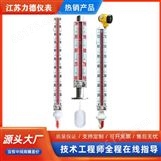Within the past few years, several methods have been devised in order to obtain images with nanometer resolution of cellular features using an optical microscope (STED, PALM, STORM). Although powerful, these methods are quite inefficient when detecting sparse nanostructures in an image. Also they are inadequate to detect the dynamics of chemical reactions which occur in the sub-second time scale in nanometer-size 3D structures, which are continuously moving and changing shape.
With NanoImaging approach to super-resolution, the laser beam does not scan the sample following a predetermined pattern as is the case in raster images. Instead, the laser scanning imaging is based upon a feedback algorithm where the path followed by the laser beam is continuously adjusted and decided during the scan according to the shape of the object to be imaged. The algorithm moves the laser spot at a fixed distance from the object's surface; as the position of the laser spot and its distance from the surface are known parameters, they are utilized to reconstruct the shape of the object. 3D cellular structures can be resolved down to 20-40 nm with a precision of 2 nm in a matter of a few seconds.
The sequence of operations for using the SMT NanoImaging is straightforward: firstly, a confocal image of the area of interest is acquired; then, the object to be imaged is identified by the user. The SMT NanoImaging is activated through the switch and the laser beam is positioned at a distance of 100-200 nm from the center of the object. As the laser spot approaches the surface to be imaged, the amount of fluorescence increases. Yet, the increase in fluorescence depends upon the distance as well as upon the concentration of the fluorophores and their respective quantum yield. In order to separate the effect of the distance from the effect due to the concentration, the position of the spot is forced to oscillate perpendicularly to the surface. That is, the intensity of the fluorescence changes during the oscillation (Figure 1).

Figure 1. Schematics of the modulation tracking technique. The beam spot travels in a circular orbit around the object and its distance from the object's surface is varied periodically at a set frequency; typically, for each orbit the number of oscillations is between 8 and 32 depending upon the size of the object. These small oscillations of the radius are used to calculate the modulation function of the orbit, from which the distance of the spot from the surface is determined.
The modulation function is defined as the ratio between the alternating part and the average part due to the local fluorescence of the surface. Practically, the modulation is the ratio between the spatial derivative of the PSF and the intensity. The modulation function increases quasi linearly as a function of the distance from the surface and this feature allows for its use in determining the distance of the laser spot from the surface along the orbit. In this way, the transversal shape of the object is calculated and reconstructed.
| Tracking Methodology | XY-axis using galvo-controlled mirrors Z-axis using piezo-controlled stage |
| Maximum Resolution | 20 nm ± 2 nm |
| Data Acquisition Frequency | 32 to 256 KHz |
| Circular Orbit Frequency | 2 KHz |
| Detector | Internal PMT of FV1000/FV1200 |
| Detection Electronics | ISS Photon Counting Unit |
| Computer | 3 GHz, 4GB RAM, 200 GB hard drive, 27" monitor (minimum specifications n) |
| Acquisition and Analysis Software | SimFCS by Globals Unlimited |
Below is a schematic of the NanoImaging units and its connections to the FV1000 confocal microscope. A switch box allows for the user to operate the FV1000 in the standard mode of operations, or to activate the NanoImaging system. When in nanoimaging operation, the galvo-mirrors of the FV1000 are controlled through the electronics provided by ISS. The signal is collected by the internal detectors of the FV1000 and diverted to the ISS photon counting data acquisition unit. Molecules are tracked in the XY plane using the galvo-controlled mirrors of the FV1000 and in the z-axis by a piezo-controlled stage. Instrument control, data acquisition and display are done on a separate computer.

The right section includes the instrument components (PC, control electronics, scanner and laser launcher). The left section of the schematics includes the components provided by ISS with the upgrade package.
| | Nanometer-scale Imaging by the Modulation Tracking Method Lanzano, L., Digman, M.A., Fwu, P., Giral, H., Levi, M., Gratton, E. J Biophotonics, 2011, 4(6), 415-24. |
| | Measurement of Distance with the Nanoscale Precise Imaging by Rapid Beam Oscillation Method Lanzano, L., Gratton, E. Microsc Res Tech, 2012, 75(9), 1253-64. |
| | Real-time Multi-Parameter Spectroscopy and Localization in Three-Dimensional Single-Particle Tracking Hellriegel, C., Gratton, E. J R Soc Interface, 2009, 6, Suppl 1:S3-14. |
| | Real-time Nanomicroscopy Via Three-Dimensional Single Particle Tracking Katayama, Y., Burkacky, O., Meyer, M., Bráuchle, C., Gratton, E., Lamb, D.C. Chemphyschem, 2009, 10(14), 2458-64. |
| | Distance Measurement by Circular Scanning of the Excitation Beam in the Two-Photon Microscope Kis-Petikova, K., Gratton, E. Microsc Res Tech, 2004, 63(1), 34-49. |

|

|

|

|

|

|
*您想獲取產品的資料:
個人信息: